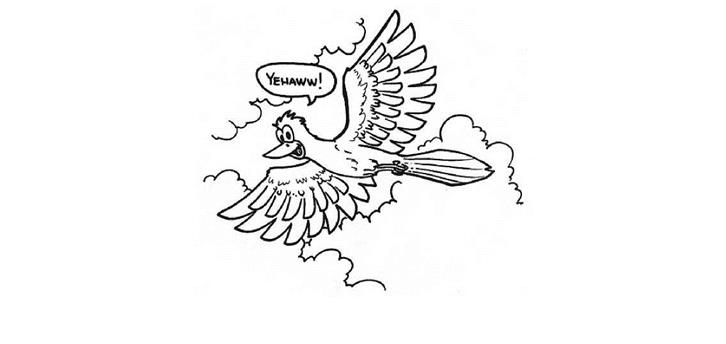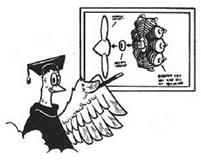THE THRILL OF FLIGHT
When asked what makes an airplane fly, I’m often tempted to answer, “magic. ” To me, the forces of aerodynamics are that marvelous and awe-inspiring. But as aweinspiring as these physical forces are, they are easily understood, and can be applied to every invention of aviation.
Part 2 introduces you not only to airplanes, gliders, helicopters, and hot-air balloons, but to the aerodynamic forces that enable them to fly. You’ll even get a look at some of the oddities of aviation, including a jet that behaves like a helicopter.
|
|
Chapter 7
How Airplanes Fly, Part 1: The Parts of a Plane
|
|
In This Chapter
^ Identify the basic parts of an airplane V The powerplant ^ The fuselage >- The wings ^ The empennage ^ The landing gear
We’ve already seen that airplanes are far from the only kind of aircraft available to the recreational aviator. But there’s something about the fixed-wing engine-driven airplane that makes it the most popular form of flying among pilots in the United States. (Gliding is also gaining in popularity. We’ll look at the differences between flying airplanes and gliders in Chapter 9, “Soaring on Silent Wings: Gliding.”)
The attraction that airplanes hold for many of us is rooted in nostalgia. The image of the dashing barnstormers of the 1920s and 1930s is deeply ingrained in our culture. The silk scarf and the swagger of those daring pilots have become part of an archetype that is purely American in origin; we see the barnstormers who pioneered the skies as direct descendents of the pioneers who tamed the Great Plains and the Rocky Mountains.
Maybe it’s simpler than that, though. Maybe some of us love flying airplanes because they allow us to master an element that is foreign to us, though good pilots eventually learn that mastery of flight only comes with acknowledging its potential dangers and backing down when they are overmatched.
Airplanes give us the ability to break the two-dimensional restraints that bind us to the ground and enable us to view the earth from a lofty perspective where the fumes of traffic and the constant reminders of responsibility grow less important with distance, and where the elemental demands of the sky and the airplane occupy all our attention.
With that bit of hangar philosophy, let’s begin to examine the delightful details of how an airplane flies. In this chapter we’ll take a look at how the airplane is put together, and in the next chapter we’ll examine the forces that keep it in the sky.













